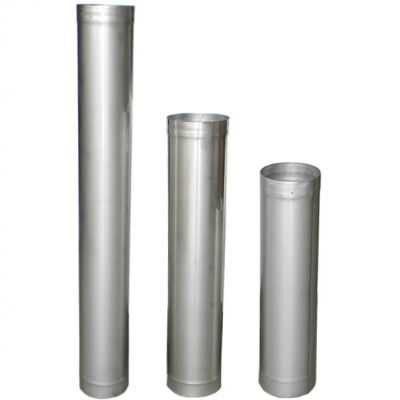![[Hearth.com] Backdraft through Hot Water Chimney [Hearth.com] Backdraft through Hot Water Chimney](https://www.hearth.com/talk/data/attachments/340/340372-fd7d29caf116b0a8282ad6d441cbfbf5.jpg?hash=_RTpFERJU6)
I have my Woodstove in the basement, with the chimney (6" rigid liner) going through an external brick chase. Also in the same chase is the 5" chimney for the hot water tank.
What's happening is, depending on the wind direction (seemingly) the smoke is coming out the stove chimney and then some is getting sucked back down the water tank chimney and going into the utility/furnace room.
![[Hearth.com] Backdraft through Hot Water Chimney [Hearth.com] Backdraft through Hot Water Chimney](https://www.hearth.com/talk/data/attachments/340/340369-d413f43a7b95c59b7bb8585baba99e7f.jpg?hash=0yEPSCYkxb)
Counsel I was given was to extend the stove chimney by 2-3', and as well to swap up the cap for something called a "Vacu-Stack".
The theory being that the cap will strengthen upward draft so smoke clears faster, reduce the chance of wind forcing smoke back down, and make it less likely for exhaust to spill across into the (now comparably lower) water heater pipe.
![[Hearth.com] Backdraft through Hot Water Chimney [Hearth.com] Backdraft through Hot Water Chimney](https://www.hearth.com/talk/data/attachments/340/340371-3db1cfa618bba9799fad70847b7582ef.jpg?hash=Sps5zpRoWw)
I have 2 questions for you experts regarding the above:
1. Does this seem like a reasonable solution? And if so...
2. Do we recognize this brand of stainless steel liner?
![[Hearth.com] Backdraft through Hot Water Chimney [Hearth.com] Backdraft through Hot Water Chimney](https://www.hearth.com/talk/data/attachments/340/340370-5b406168408e81fdb1f0a73d17ee3819.jpg?hash=J4tiM9Yg-I)
It uses twist-lock to connect the male/female ends. The only markings I can find on it read "Made in Canada" and "000000"
Most options up in here Canada are Selkirk, DuraVent and ICC, but google image doesn't seem to show a good match.
And for the record - I do plan to brace the new higher stack to either the roof or brick chase itself.
Thanks in advance!!




![[Hearth.com] Backdraft through Hot Water Chimney [Hearth.com] Backdraft through Hot Water Chimney](https://www.hearth.com/talk/data/attachments/340/340704-97e8e02f3913e1e75963624ea8839ce4.jpg?hash=FvnzLM6h2p)